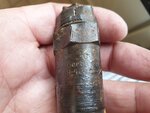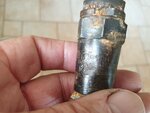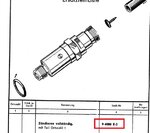Correction - the wing cannon of the K-6 were MK108, as were the gondola weapons referred to in that report. MK103s would likely have wrenched the wings off when fired. The Mauser MG213 C revolver cannon was intended to replace the MK108 in most applications - in the 109 at least in the through-the-propeller-hub installation.
Ludwig Boelkow led the team that designed the 109 K - today we would probably call the Kurfuerst a re-imagination of the 109. The team worked in Wiener Neustadt, prototypes would be flying in October, 1943, with production start envisaged early in 1944. A bombing attack on August 13, 1943 (15th AF?) destroyed the prototype shop; essential drawings were lost. This set back production start by at least eight months.
Ludwig Boelkow led the team that designed the 109 K - today we would probably call the Kurfuerst a re-imagination of the 109. The team worked in Wiener Neustadt, prototypes would be flying in October, 1943, with production start envisaged early in 1944. A bombing attack on August 13, 1943 (15th AF?) destroyed the prototype shop; essential drawings were lost. This set back production start by at least eight months.



